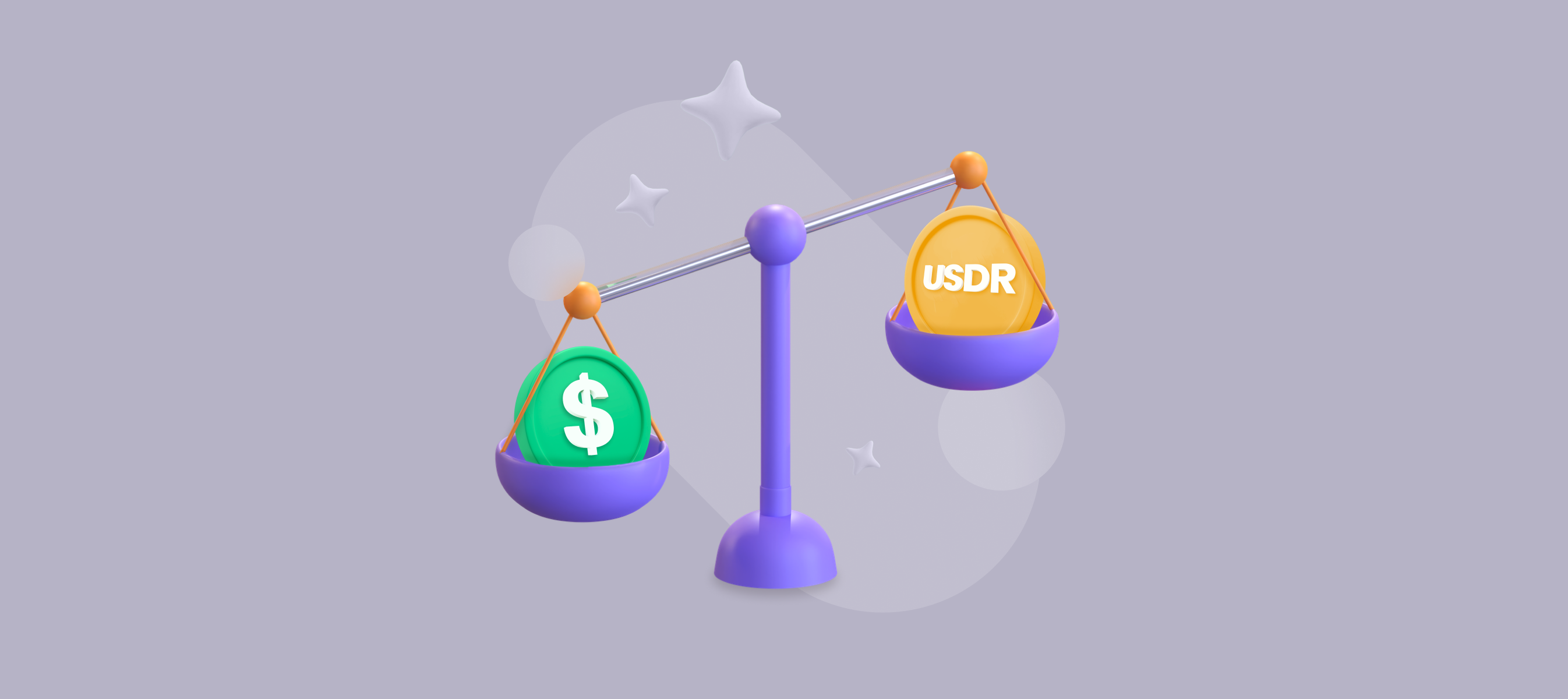USDR Stablecoin Depeg

This blog post will cover:
- What is USDR?
- What caused USDR depeg?
- What is Tangible doing to stabilize the situation?
- Aftermath for the crypto industry
- Could this stablecoin depeg have been avoided?
The real estate-backed stablecoin USDR faced a significant setback as it depegged from the United States dollar and approximately half of its value in October 2023, causing significant reverberations within the crypto community.
Today, we are going to sort out what exactly caused this stablecoin disaster.
What is USDR?
USDR or Real USD is a stablecoin built on Polygon and issued by Tangible Protocol. The token positions itself as the first cryptocurrency backed by tokenized real estate situated in the United Kingdom. One USDR token is supposed to be equal to one USD.
Using yield derived from rental revenue, Tangible promised that USDR would deliver a native real yield to stakers through a daily rebase, projected to range between 5 - 10% annual percentage yield (APY). Real estate was chosen because it is “inflation-proof”.
What caused USDR depeg?
USDR is backed by an “Insurance fund” which consists of cryptocurrencies apart from real estate assets. It was initially minted using another stablecoin, DAI. Even more so, on its site, the issuer stated that up to 50% of the backing is held in this token. This was a security measure against depegging, in case a lot of users wanted to redeem their tokens simultaneously.
© Coinmarketcap
However, when Tangible removed DAI from the equation and put almost 79% of the assets into real estate to increase yield, this caused a major liquidity shortage and a wave of selling. This panic led to USDR losing half of its value and plummeting to $0.5.
An important factor that led to the shocking stablecoin news was the decline in investor confidence. There was a serious lack of transparency surrounding the real estate holdings. The project's official documentation does not disclose, for instance, asset valuation and geographic locations of the properties. It appears that the transparency program which featured proof of reserves by Chainlink did not help.
Despite the fact that, according to the company, USDR is still overcollateralized, the lack of transparency and user trust are major obstacles to the price recovery.
What is Tangible doing to stabilize the situation?
According to Tangible, the first thing on their agenda in relation to the stablecoin depeg is to bring the USDR value back to $1. They are committed to restoring 100% of the collateral ratio (CR).
Moreover, they plan to explore options, including property liquidation, to address the situation. The team is in the process of discussing the details with real estate partners. According to the project, this may take a few weeks.
Furthermore, the development team is actively working on the Baskets product, which will be deployed alongside another product. These aim to help restore the project's financial stability, but since those projects are not finalized yet, we do not know how exactly they are supposed to help.
Tangible recently burned $600,000 worth of USDR, leading to a +1% increase in the CR. The rebase feature of USDR has been turned off, and the TNGBL airdrop has been suspended. Incoming yields from the real estate portfolio will be used in re-collateralization efforts.
As all of these measures require time to impact the situation in a meaningful way, we have to wait and see what the future holds for USDR. As of October, 26, the asset’s price seems to have stopped above the $0.5 mark and does not fall further.
Aftermath for the crypto industry
Unfortunately, this is not the first or even the most detrimental case of a stablecoin losing its peg. The Terra-Luna crash is still fresh in memory for many crypto investors. Those events led to general distrust towards algorithmic stablecoins, and even their prohibition in some cases, as was done in European regulation MiCA.
Regulatory bodies may become more vigilant and implement stricter regulations on stablecoins and other crypto projects. This could lead to increased compliance requirements, which might affect the broader crypto ecosystem.
Could this stablecoin depeg have been avoided?
This incident will probably lead to crypto investors being more cautious when selecting stablecoins for their portfolios, as they should be. USDR, which relied to a large degree on DAI’s stability, which in turn is backed by collateral, including a large portion of USDC, which itself had a depeg incident quite recently seems to be exposed to too many variables for a stablecoin.
The reason why the largest stablecoins, such as USDT and USDC are backed mostly by cash and U.S. Treasury is precisely because the issuers want to avoid depegs due to the lack of liquidity. Investors should keep this factor in mind before purchasing any stablecoins.
In conclusion, depeg-related stablecoin news consistently underscores the associated risks. This emphasizes the importance of exercising caution and conducting in-depth research when choosing stablecoins for investment, with a special emphasis on liquidity and transparency.
SimpleSwap reminds you that this article is provided for informational purposes only and does not provide investment advice. All purchases and cryptocurrency investments are your own responsibility.

